How to give your home street appeal – try our ideas for a stylish first impression
Update your letter plate, swap your handle and replace your house numbers...
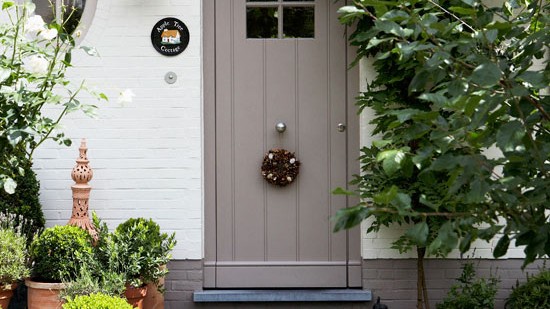

When it comes to kerb appeal, a good front entrance can make or break the visage of your house. Narrow openings are being replaced by generously proportioned doors on weighty pivot hinges.
On period exteriors, demure door furniture is ceding to over scaled ironmongery fashioned from rich bronze or brass in to shapes worthy of a modern sculpture gallery. Elsewhere, deep paint hues and imaginative lighting ensuring that the entrance is no longer a decorative afterthought, but an integral part of both the look and feel of the whole property.
Get your home's exterior just right with our garden ideas
For interior designers such as Monique Tollgard, the front door is also a prelude for the style that lies within: ‘The entrance is the first encounter for you, your guests and your home. The materials and colours we use allows us to introduce the "red thread" or guiding motif of the house immediately.'
Fellow interior designer Karen Howes agrees: ‘The front door can say so much about the owner: it can be relaxed and welcoming or more formal. For us, the front door is so important; it is the start of the story and first and last impressions are so important.'
1. Replace your front door
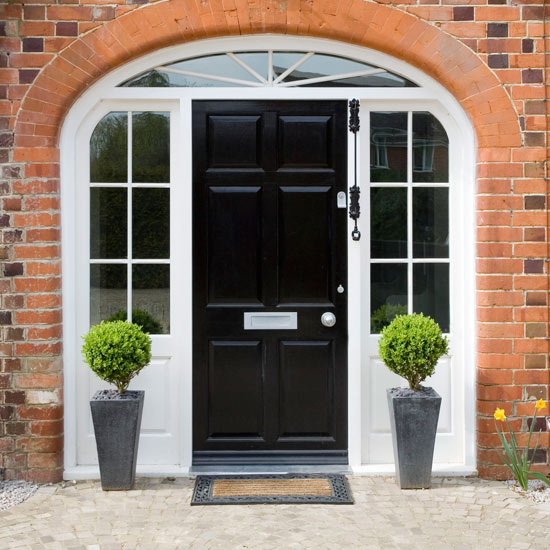
There are several essential factors to consider when choosing this all-important centrepiece. For security and durability, Accoya (a softwood door with the robust properties of a hardwood) and oak are popular choices for front doors. Traditional door specialists like Voysey and Jones will produce doors to match the period of your home complete with ‘antiqued' brass door furniture for timeless appeal (and less need for Brasso).
For contemporary facades, companies like Silvelox or Urban Front lead the way with wide, pared-down doors in striking unpainted woods such as American Black walnut, Wenge or modish Fumed Oak with glazed panels and pivot hinges completing the look.
‘Always consider the location of your house before you decide,' says Urban Front designer Elizabeth Assaf. ‘A south-facing house will demand a harder wood and it's always a good idea to get samples and hold them up to the facade to guague the effect.'
On a similar note, Yolande Hesse of Back to Front architects says: ‘Avoid blacks or dark grey paints on south-facing front doors, as the colour retains the heat causing the wood to literally boil and crack.'
2. Upgrade your key door furniture

The conventional lion knocker in gleaming brass still cuts a dash on period doors, but for exterior artistry look to companies such as Nanz who excel at bespoke, sculptural shapes as striking as a piece of beautiful jewellery. Scale matters: one larger piece will have more punch than fiddlier fittings.
When choosing the finish, lighting and door fittings specialist Charles Edwards counsels: ‘The age of your house needn't dicate the style of ironmongery: if your interior is contemporary then a nickel or chrome finish will work well with period joinery. Equally, a mellow rural exterior will be better complemented by softer antique tones such as bronze or brass.
For practicality Charles says: ‘Chrome is the hardiest finish requiring little or no maintenance.'
New hardware will make a world of difference, and you don't have to spend a lot. Follow our tips to get your home's entrance looking great.
Salvage old metal fittings
Even if it's dull or rusty, your front door's existing door furniture may still be usable.Give it a boost by gently rubbing away rust with wire wool, before buffing the metal to a shine with a paste made from bicarbonate of soda mixed with a few drops of water.
If, after cleaning, the original door furniture - think door knobs, knockers and letter plates - is worth keeping, use these as your starting point when choosing replacements for pieces that are no longer looking their best.
Stick to a consistent style
To ensure that your door looks smart and chic, rather than a disorderly mish-mash, choose door furniture with the same finish and style - don't even consider inserting a chrome letterbox beneath a brass knocker!
If you're not sure what will work for your home's front door, or your house style in general, find inspiration with our hallway ideas.
Match the old with the new
If you have a period property with an original front door, or even a modern replica, finish it with door furniture from the correct era. Comb salvage yards for door features but ensure all the screws are in place, as they won't be made to today's standards.
And there's no need to compromise your home's security with aged locks and hinges just for the sake of old-world charm – quality reproductions are available. JD Beardmore, for instance, still uses original casts from the 19th century, while Drummonds will hand-make quality copies of your original samples.
Consider your door's style
When it comes to choosing the front door for your home, be sympathetic to your property's period, but don't be restricted by it - look at your neighbours' doors for inspiration. Brass furniture can add grandeur to the plainest door, while modern stainless steel or chrome can give an old-meets-new edge to a period exterior.
3. Add some extra finishing touches
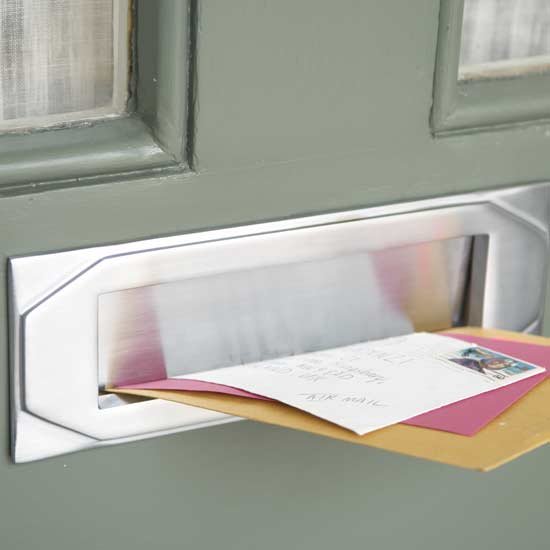
Choose a door knob to suit your style. Holloways of Ludlow have a great range of designs. Alternatively, go for a door handle. They're available on a rectangular back plate or on a rose (a circular back plate), and also in pairs for the door's exterior and interior. Head to Jim Lawrence to browse their range; our guide to how to fit a door handle has all the expert advice you will need to install it yourself.
A letter plate can be a horizontal slot in the centre of the door, or a vertical letter plate in the doorframe. Try Courtyard Accessories for some stylish options. If your front door has a mortise lock (a lock set into the door, which can be locked and unlocked on both sides), you can smarten it up with an escutcheon, which fits over the keyhole. Find stylish designs at Jim Lawrence.
Look for the perfect door knocker. Traditional designs often feature animals, while modern versions tend to be a simple chrome ring or bar. Door Furniture Direct has a great range of options.
Finally, a visible house number is essential for visitors and deliveries. Even if you already have a decorative name plaque on your wall, a number on the door will still be useful. Head to B&Q for a wide range of styles.
4. Consider your external lighting
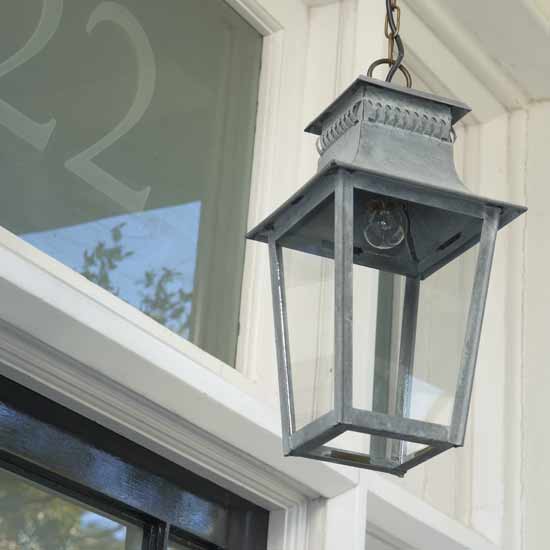
Less is more when it comes to external lighting. Sanjit Bahra of Design Plus Light offers his top tips to effective outdoor illumination. 'Lighting should direct you to the front door safely with steps and changes well illuminated,' Sanjit says. 'My favourites are low glare step lights; ideally angled downwards or with a half shield to reduce any stray light.'
'I like to include a downlight in a porch to illuminate the front door; it picks out ironmongery and is the best way to light a door. You can then dim decorative wall lights to look beautiful. Lighting can also direct you away from areas where you don't want people to go; so what you don't light is just as important.'
'Aim for a low glare; at night you want the eye to be drawn comfortably along a lit path and to the front door, be careful to position spike (garden) lights out of sight lines so that planting is lit without glare. Make sure that step lights are shielded so that the light is directed on to the steps.'
'Finally, ensure the lighting is properly controlled for no wastage; you can add it to the control system for the rest of the house or simply have it linked to a timer. If you do opt for security floodlights make sure you can turn them off when not needed.'
5. Paint your front door

Sarah Cole from Farrow & Ball gives tips on how to choose the perfect colour for your door. 'When choosing a front door colour it's not only important to look at the other colours in your area but to also consider the age of the property as colour can look and feel different in urban or rural settings,' she says.
'The starting point always comes down to personal choice and the first impression you want to create. One rule of thumb is to tone your front door with the walls of your house, use stronger colours with brick and stone and lighter colours with painted masonry. For example, a Green Smoke front door, will complement a red brick house, while neutrals like Stony Ground work well with stone facades.'
'Classic colours such as black and red are incredibly popular for front doors: try Off-Black or Incarnadine to create a stylish entrance. Darker colours such as Brinjal, Studio Green and Drawing Room Blue also work to great effect on front doors and are brilliant for making yours unique.'
'To really create a personal stamp, be bold and try using bright colours like Yellowcake, St Giles Blue or Charlotte's Locks. The ever-expanding palette of external paint colours and finishes allows you to create visual links between the door and facade.'
6. Tame your lawn and perfect your planting
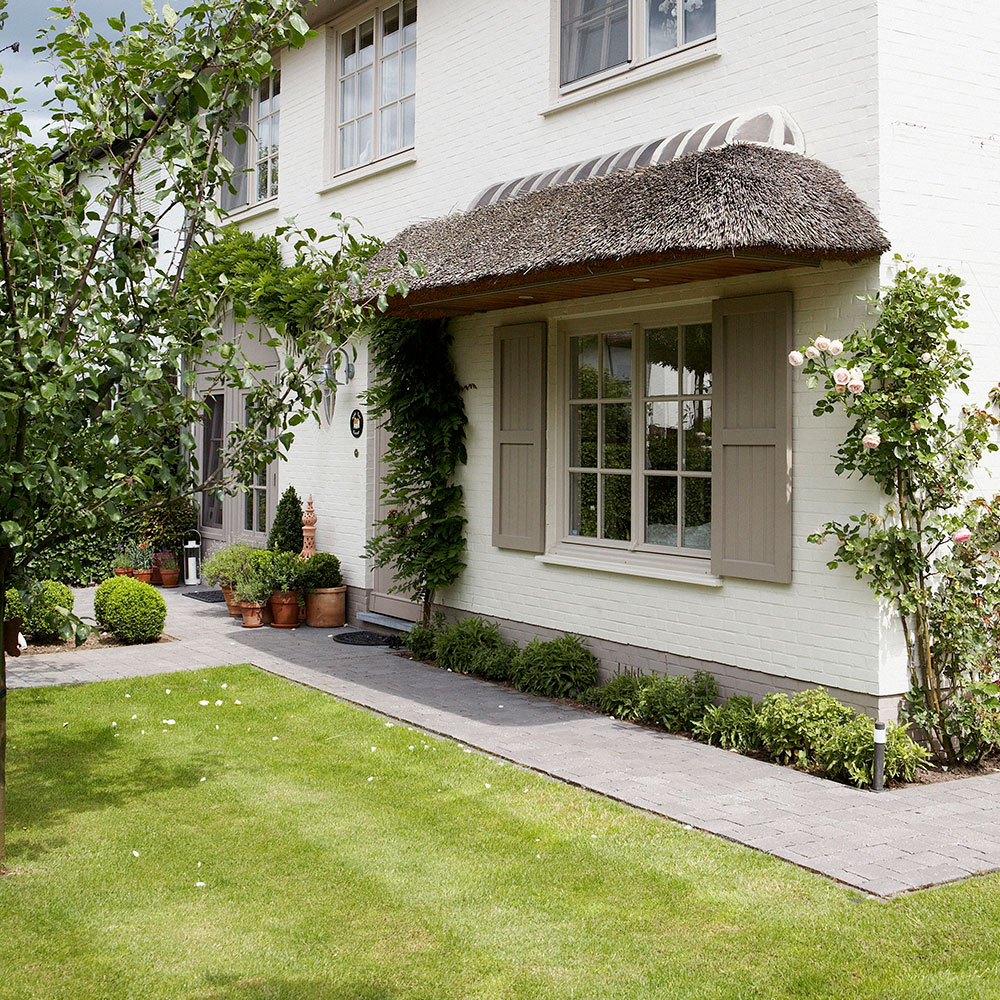
Unless you live in splendid isolation says garden designer Charlotte Rowe, aim to create a front garden or approach which not only complements your architecture but respects your neighbours. Limestone, Portland or Yorkstone and traditional encaustic tiles are perennials for paths often complemented by gravel in tones chosen to echo the facade of a property. For added interest Charlotte likes to mix reclaimed York stone with inlaid strips of copper between the slabs.
‘For planting, aim for one striking planter and avoid lots of smaller pots. Tall shallow window boxes look smarter than smaller ones,' she says.
At Helen Green Design, NataliaMiyar favours; ‘Matching metallic planters with metalwork on the front of the house to tie all the elements together.' Don't forget the practical elements too like bikestands or bin shelters, ideally painted to blend in with the setting.
For more advice, read: Front garden ideas – how to make the most of your bonus garden space
7. Build on a porch
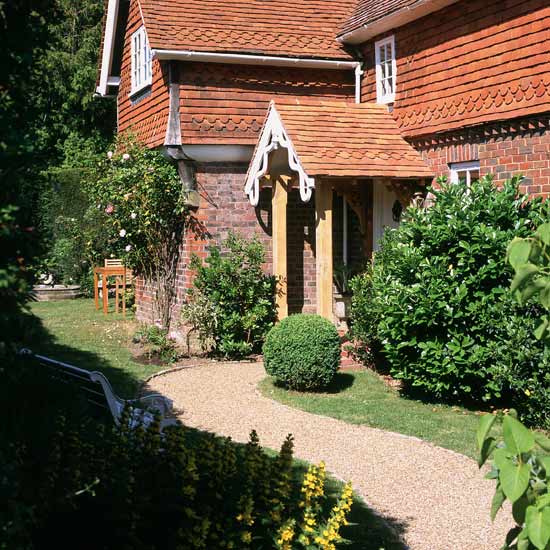
A well-designed porch should be both aesthetic and practical, framing the front door while providing shelter, light and the promise of a warm hallway. Yolande Hesse, of Back to Front Architects, singles out some key points to bear in mind when designing a porch.
A common mistake when designing porches is to simply echo the roof pitch. If your roof line is not attractive then aim for a simpler, less obtrusive porch design to detract from the roof above.
For pitched porches avoid dangling lantern lights as these provide a haven for spiders seeking warmth. Porches which are larger than 3m by 3 metres will require planning as they fall outside the permitted development rules. If you don't have a back door then try to factor in practical space for boots and scrapers in your porch design.
Get the Ideal Home Newsletter
Sign up to our newsletter for style and decor inspiration, house makeovers, project advice and more.

Heather Young has been Ideal Home’s Editor since late 2020, and Editor-In-Chief since 2023. She is an interiors journalist and editor who’s been working for some of the UK’s leading interiors magazines for over 20 years, both in-house and as a freelancer.
-
 Will a conservatory add value to your home and how can you maximise it?
Will a conservatory add value to your home and how can you maximise it?This is what the pros say
By Amy Reeves
-
 I’ve been looking for a new signature scent for my home and The White Company's new fragrance is the exact summer holiday smell I needed
I’ve been looking for a new signature scent for my home and The White Company's new fragrance is the exact summer holiday smell I neededSantorini smells fresh, summery and sophisticated
By Kezia Reynolds
-
 How to remove algae from garden walls in five steps – and the cleaning product experts rave about for tackling it fast
How to remove algae from garden walls in five steps – and the cleaning product experts rave about for tackling it fastExperts share their top tips for getting garden walls algae-free
By Katie Sims